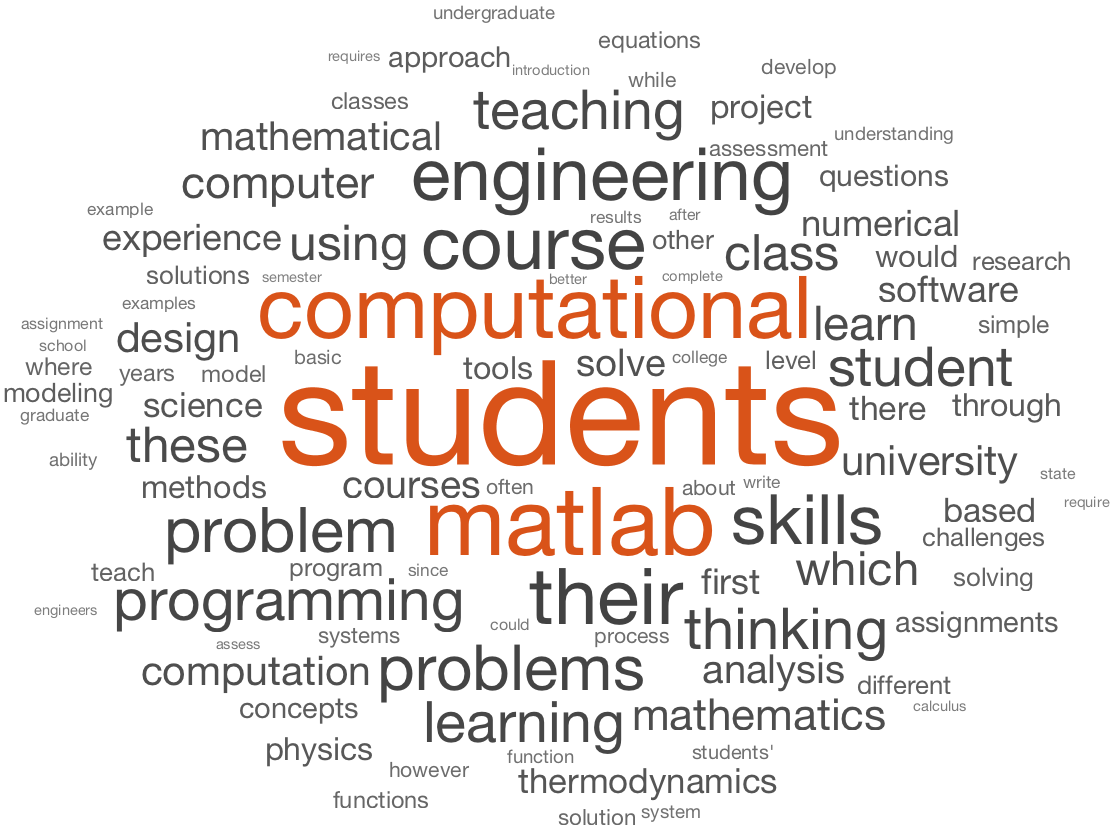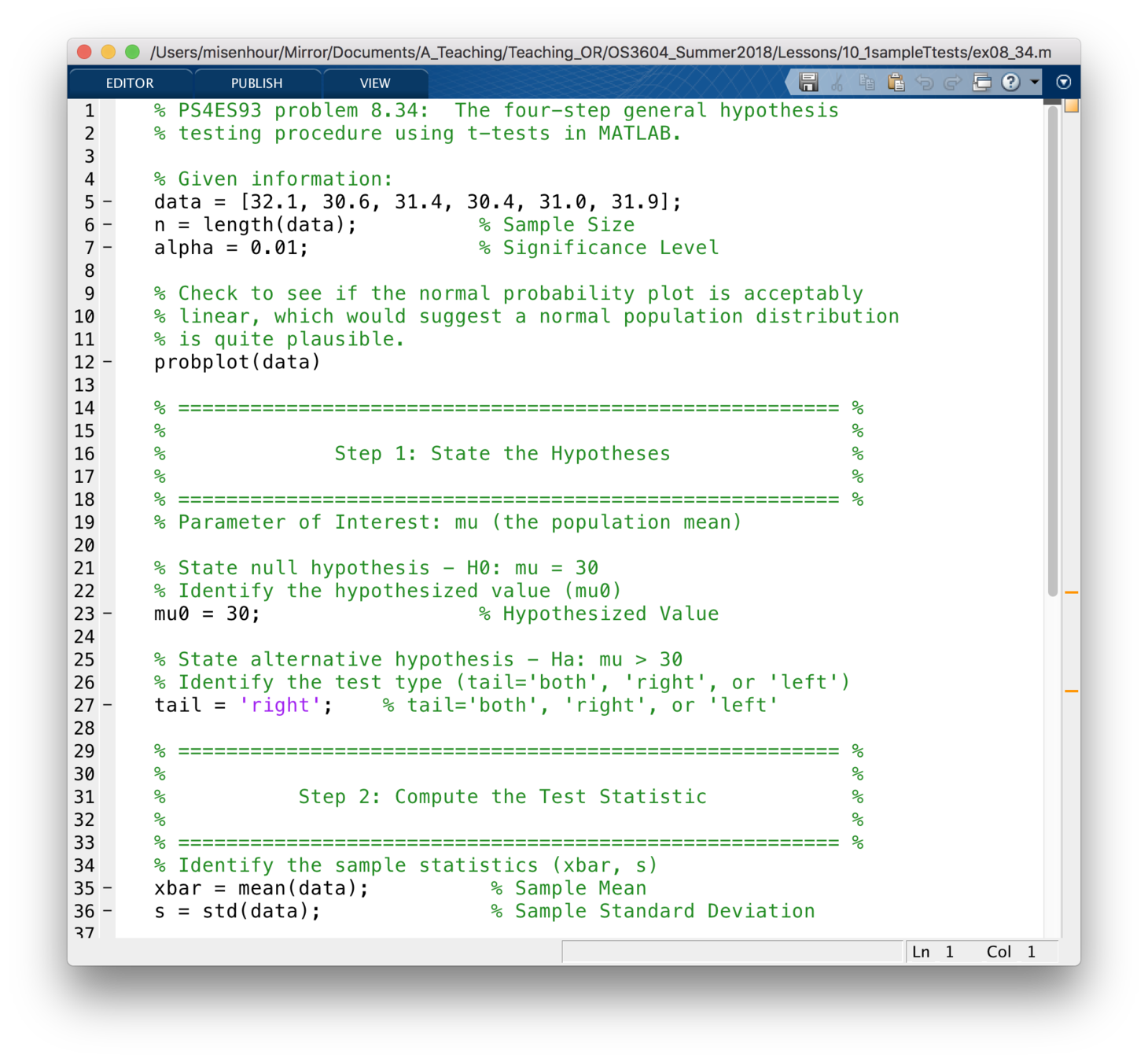The Use of Computation and Computational Techniques for Data Analysis
by Michelle L. Isenhour, PhD
mlisenho@nps.edu
After reading all of the participant essays, what word do you think was the most commonly used word?

Background
As a service course for other departments, I teach basic (undergraduate) statistics and data analysis to students at the graduate level.
The purpose of my course is to prepare students for computational data analysis they will see in their downstream courses, as well as in their future careers as military officers and US Department of Defense civilians.

Computational Learning Goals
- At the completion of the course, students will be able to:
- Acquire data, perform basic data cleaning, and transform variables to facilitate analysis.
- Perform exploratory and inferential methods for analyzing data and apply the methods in real-world contexts.
- Formulate simple algorithms to solve problems and code them using statistical software.
- Fit and assess the adequacy of data-based models using statistical software.
Modules
Students are exposed to the following topics:
- Exploratory Data Analysis: Plots and Descriptive Statistics
- Statistical Inference: Parameter Estimation
- Statistical Inference: Hypothesis Testing
- Statistical Inference: Analysis of Variance
- Statistical Inference: Regression Analysis
The "Evolution"
Last year was my first year teaching with MATLAB.
Incorporated MATLAB Live Scripts and MATLAB Grader.
This year, migrated towards self-paced materials.


Incorporating MATLAB
- MATLAB Live Script (.mlx)
- Incorporate lesson material with code examples

Incorporating MATLAB
- MATLAB Script (.m)
- Code examples with comments

Incorporating MATLAB
- MATLAB Grader
- Instant feedback on student coding attempts

MATLAB Live Scripts
- MATLAB Live Scripts (.mlx)
- Confidence Intervals for Mean
- Confidence Intervals for Variance
- Confidence Intervals for Population Proportion
- One Sample Hypothesis Tests
- Two Sample Hypothesis Tests
- Paired Sample Hypothesis Tests
- Measures of Linear Relationships
- Simple Linear Regression
- More on Simple Linear Regression
- Modeling with Simple Linear Regression
- Multiple Linear Regression
- Multiple Linear Regression with Categorical Variables
- Using Regression Models to Make Predictions
- Assessing Model Adequacy
- Regression with Transformed Variables
- Logistic Regression
- Analysis of Categorical Data
Teaching Activity
MATLAB Resources
Linear Regression:
- Interpret Linear Regression Results > Documentation
- Linear Regression > Documentation
- Linear Regression with Interaction Effects > Documentation
- Summary of Output and Diagnostic Statistics > Documentation
- F-statistic and t-statistic > Documentation
- Coefficient of Determination (R-Squared) > Documentation
- Coefficient Standard Errors and Confidence Intervals > Documentation
- Residuals > Documentation
- Generalized Linear Models > Documentation
Hypothesis Testing:
- One-Sample z-Test > Documentation
- One-Sample t-Test > Documentation
- Two-Sample t-Test > Documentation
- Sample Size and Power for Hypothesis Tests > Documentation > Example
Analysis of Variance:
- Analysis of Variance and Covariance > Documentation
-
anova1> Documentation -
anova2> Documentation -
anovan> Documentation -
multcompare> Documentation
Pre-Class Self-Assessment
- Pre-class student self-assessment:
- Read/review the material and attempt a pre-class assignment.
- Review the solution, along with a MATLAB script file (or Live Script).
- Identify deficiencies prior to attending the class lecture.
-
Pre-class self-assessment via individual student blog:
- Map the content to real-world examples and explain how they would utilize the techniques.
- Answer specific questions to assess understanding.

Post-Class Assessment
- Post-class computer-based assessment:
- Retake the computational assessment at the end of each lesson an unlimited number of times.
- Open book, open notes and the use of any statistical software package is authorized.
- Immediate feedback provided to the student.
- Post-module laboratory exercise:
- Hands-on computational assessment, beginning in class and continuing out-of-class.
- Culminates in a two-page report, executive summary, or web page.
- Post-course final exam:
- Two week out-of-class (take home) assessment.
- Approximately 30 questions, 20 True/False and Multiple Choice and 10 computational problems.